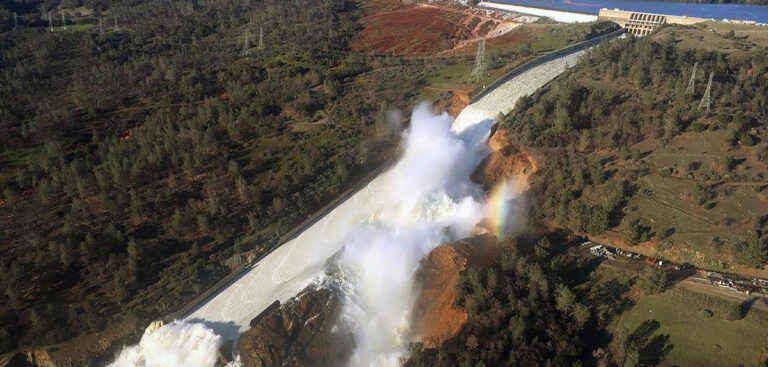Researchers in the USA have identified another risk factor associated with climate change: the higher risk of flooding from rainfall that would previously have fallen as snow.
The warming climate is increasing the likelihood that precipitation that would have once generated snowpack instead falls as rain. According to the study by Stanford researchers this likelihood also brings with it a much larger flood risk.
In an analysis of more than 400 watersheds from 1980 to 2016 the researchers found that winter floods driven by rainfall can be more than 2.5 times as large as those driven by snowmelt.
They also found that the size of floods increases at a much higher rate in proportion to the increase in rainfall – for a storm that produces 25% more precipitation, the average flood is 33% larger.
The dangerous consequences of a warming climate on winter precipitation were brought in to focus in February 2017 when heavy rains led to a spillway failure at the Oroville Dam in Northern California, forcing the evacuation of more than 180,000 residents downstream of the dam.
“The Oroville Dam crisis is a good example of how existing infrastructure is already vulnerable to flooding,” said lead author Frances Davenport, a PhD student in earth system science at Stanford’s School of Earth, Energy & Environmental Sciences. “These results show that warming alone – even without changes in precipitation amounts – could lead to changes in the size of floods.”
For the study, published in Water Resources Research, the Stanford team evaluated 410 watersheds using daily streamflow measurements from the US Geological Survey. They used this data to identify the largest precipitation events and the time periods with the highest streamflow.
Finally, they analyzed these events by comparing the amount of rain, snow and snowmelt before, during and after each event.



